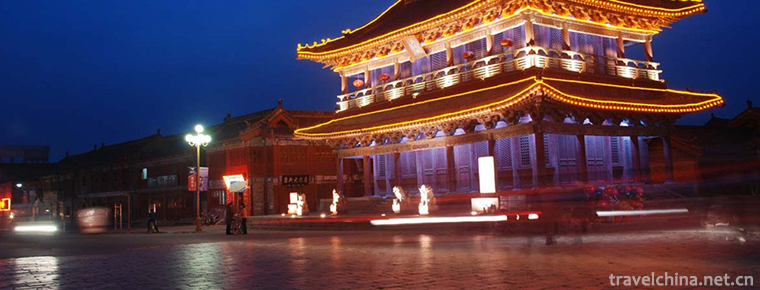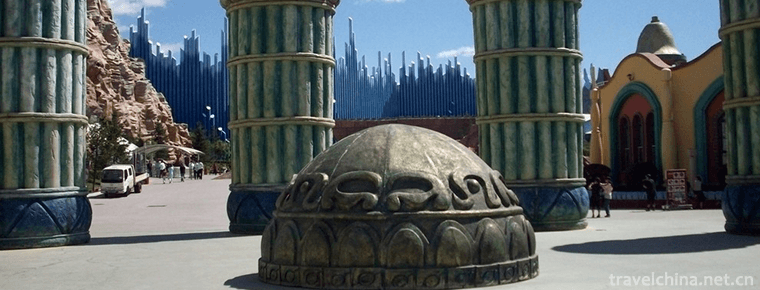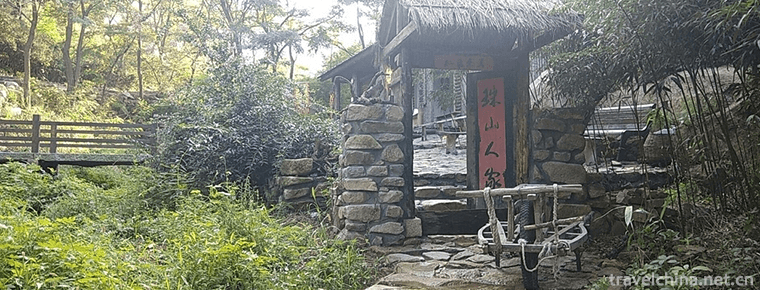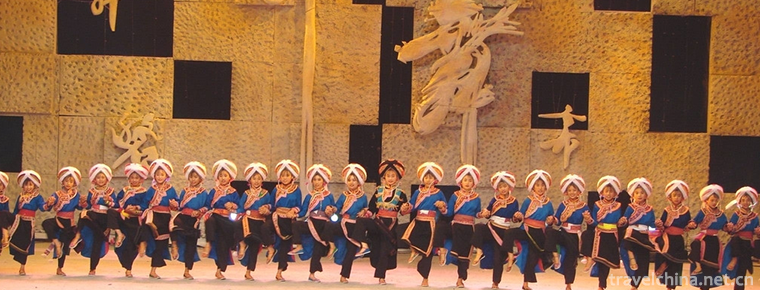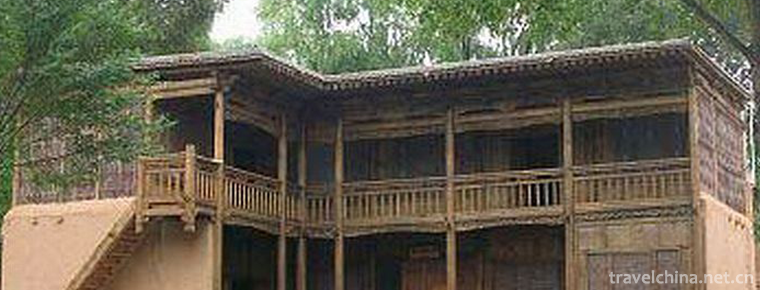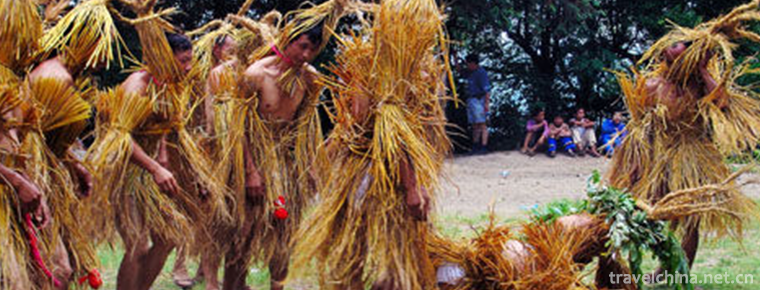Burning Techniques of Linqing Gong Bricks
Burning Techniques of Linqing Gong Bricks
Linqing tribute brick firing technology, Shandong Linqing traditional technology, one of the national intangible cultural heritage.
Linqing fired tribute brick is an ancient handicraft. Beginning in the early Ming Dynasty, Yongle's firing technology is the unique experience accumulated by the working people in Linqing of Shandong Province in production practice. Linqing Brick, also known as Gong Brick, has a good texture, suitable color, different shapes, no alkali erosion, sound knocking, firing time from the beginning of Yongle Ming Dynasty to the end of Qing Dynasty, spanning more than 500 years of development history.
On June 7, 2008, Linqing Gong brick firing technology was approved by the State Council and listed in the second batch of national intangible cultural heritage list, heritage number: _-91.
historical origin
Burning tribute bricks in Linqing began in the early Ming Dynasty and ended in the late Qing Dynasty, spanning more than 500 years. The Ming Dynasty brick kiln fired tribute bricks in Linqing "under the supervision of the Department of Construction and Repair". The Qing Dynasty was led by the governor of Shandong Province, supervised by Dongchang Prefecture and contracted by Linqing Prefecture. The "Year Expedition Brick Million" was awarded to kiln households by the court from the treasury, supervised by the court, inspected and disbanded.
Most of the official kilns in Linqing are located on both sides of the canal. They are connected by tens of thousands of kilns and hundreds of thousands of kiln workers. The hot and prosperous scenes have attracted the attention of the people at that time. "Linqing Zhi" contains: "Ming Yongle set up a branch office, the first waiter or Langzhong, then to the chief inspector of the... It's a million bricks. Branch under the brick factory, brick factory dispatched the palace competent eunuch supervisor. During the Ming and Qing dynasties, there were hundreds of brick kilns along the Weihe River and the Huitong River in Linqing. There were five or six famous kilns, such as Shilipu in the east of the city, Baita kiln in the south of the city and Zhangjiayao kiln in the northeast. In Kangxi, Yuan Qixu, a scholar living in the south of the Yangtze River in Linqing, once wrote poems to recite and burn bricks: "The autumn moonlight falls at the dawn of the Milky Way, and the grass dries up in the Qingyuan soil." Ash plundering belongs to the forest spring sky, and the official kiln is full of green smoke. Song Yingxing, the author of Tiangong Kaiwu, visited Linqing official kiln many times from Wanli 44 years (1616) to Chongzhen 4 years (1631) to inspect the actual situation of burning tribute bricks, and wrote what he saw in Tiangong Kaiwu Pottery Place.
Linqing Bricks are not only for the construction of Beijing Teachers, but also for local use. Linqing County Chronicle records that Linqing bricks are "excellent in manufacture", "from the beginning of Ming Dynasty to the middle of Qing Dynasty, the city walls, cangging, temple department, Temple View and all the great buildings in Linqing are based on this". Linqing Saili Pagoda was built in the Ming and Wanli Dynasties, and its bricks are still vividly inscribed. Linqing ancient streets and lanes, there are still some residential brick walls with clearly marked Linqing bricks.
After forty-one years of Jiajing in Ming Dynasty (1562), the policy of substituting silver for military service was changed. The labor service system of handicraftsmen was basically abolished, and Linqing brick kilns were changed from government-run to government-supervised and civilian-run. This method, which was appointed by the government by the kiln households, was implemented until the end of the Qing Dynasty when the kilns stopped burning. That is to say, after 41 years in Jiajing, the words "other counties" and "other provinces" no longer appeared on the tribute bricks in Linqing. Such as: Wanli four years kiln household Ma Yuanjian. Sun Yuejiao, a kiln household in Linqing Factory, started with it. In the twenty-seventh year of Wanli, Liang Yinglong, a kiln household, was built by Zhao Tianjian, a craftsman.
According to the content analysis of brick imprint, there are three types of brick-making personnel: kiln household, maker and craftsman. This is the common expression of brick imprint after the mid-Ming Dynasty and the whole Qing Dynasty. In addition, every kiln must have digging, bulldozing, sieving, filtering, trampling mud, brick making, kiln loading, kiln discharging, wood moving, kiln burning, water carrying, kiln and yellow paper wrapping on finished bricks and workers transporting bricks to the canal boat. According to estimates, there should be no less than 70 workers in each kiln. According to the calculation of 92 kilns, the population engaged in brickmaking in Linqing should be around 6500. Among them, "workers" are employed by kilns to engage in miscellaneous affairs: "craftsmen" are employed by kilns directly engaged in brick-making workers; "forerunners" are participants and direct organizers and commanders of kiln operations; "kiln households" are managers of kilns, have the power to hire and dismiss workers, are government employees, and are responders to the government's "investment in kilns opening". 。
In the 14th year of Emperor Qianlong's Annals of Linqing Prefecture, it is recorded that "the price of bricks is two cents and seven cents per piece of silver for work price; if a mute person is selected, seven cents for each piece of silver for change; and one centimetre and seven cents for each unusable piece of silver for change price." By the end of the Qing Dynasty, the price of each finished brick was changed to 2 hangs, and other items were reduced at discretion. From this we can see that the kiln is a country, the government pays the "kiln household" according to the quality and quantity of bricks, and the kiln households then distribute them to the leaders, craftsmen and workers according to different standards. Kiln households naturally get the most money.
In order to ensure the need for construction, the Ming and Qing dynasties often paid down deposits. Silver for tribute bricks is exclusive. In Jiajing, the silver price of bricks was collected from Henan and Shandong provinces, and from some prefectures and prefectures in Beizhi, Nanzhi, Anhui and Zhejiang. Officials were sent to Linqing for distribution.
At the end of the Qing Dynasty, there was a kiln household in Zhangzhuang, Hefeng, known as "Cheng Shiye", with more than 10 official kilns. Later, when the official kiln was closed down and the financial resources were cut off, Cheng Shiye sold the kiln farm privately because of his livelihood. However, the government does not recognize this kind of business relationship, and the judgment must be reimbursed to the government to buy in order to be effective. Cheng Shiye had to live by selling old bricks from kilns.
Process characteristics
The burning process of Linqing tribute bricks is very complicated and fine. The tribute bricks, auxiliary bricks, coupon bricks, axe-edged bricks, thread bricks, flat bricks, Watchboard bricks, square bricks, ridge kiss bricks, carved bricks and so on are generally about 25 kilograms, weighing up to 340 kilograms. Contemporary Beijing Palace Museum, Temple of Heaven, Temple of Earth, Temple of Ri, Temple of Moon, Bell and Drum Tower, Confucian Temple, Guozijian and Linqing tribute bricks on the gates of various cities and the buildings of various royal palaces can be seen everywhere. The longevity bricks used in the imperial cemetery buildings of the Ming Tombs, the Eastern Tombs of the Qing Dynasty and the Western Tombs of the Qing Dynasty were also fired in Linqing. In addition, Linqing tribute bricks have been found in Nanjing Zhonghua Gate Wall, Confucian Temple in Qufu, Shandong Province, Jingmen and Acheng in Zhangqiu Town, Dezhou Province. These tribute bricks have not been corroded by alkali up to now.
Inheritance and protection
Inheritance value
For hundreds of years, the tribute brick is alkali-free and non-corrosive, and its texture is as hard as stone, which shows the superior firing technology of the tribute brick in Linqing. The tribute bricks collected in the library are of great scientific value for the restoration of their firing skills, and also provide important material materials for the in-depth study of the canal culture and the declaration of the world cultural heritage by the Grand Canal.
Inheritance status
From 1970s to 1980s, the Palace Museum, Temple of Heaven, Guangyue Tower and other ancient buildings were repaired one after another. They came to Qing Dynasty to buy tribute bricks one after another. However, it was found that the tribute bricks in Linqing had been almost unfired, which was regrettable. Linqing tribute bricks are still in the initial recovery stage, and need to be protected and fostered to ensure the inheritance and development of traditional production techniques.
Inheriting characters
Jing Yongxiang, male, was born in 1939 in Linqing, Shandong Province. The Shandong provincial government has confirmed that it is the successor of Linqing Gong Brick Firing Technology Project.
protective measures
In 1996, Jing Yongxiang, who had mastered the traditional craft of tribute brick, established Xitaotun Brick Factory with the strong support of the relevant departments in Linqing, and resumed the tribute brick firing business. Today, Jing Yongxiang's tribute brick production base has built six kiln piers and expanded the brick base to more than 30 mu.
Jing Yongxiang, the inheritor of Linqing tribute brick, handed down the skill of burning bricks to his apprentice and his only son.
social influence
Architectural application
The "Shougong Bricks" used in the construction of imperial cemeteries, such as the Forbidden City, the Temple of Heaven, the Temple of Earth and the Ming Tombs and the Qing Tombs, were burned by Linqing.
The tribute bricks fired by Linqing East-West Taotun Brick Factory have passed the appraisal of Shandong Engineering Construction Supervision Center, and have been used in the maintenance of Penglaige, Jinan Daming Lake and Chengdu Dufu Caotang successively.


-
Cocotto Sea Scenic Area
The Cocotto Sea Scenic Area and Xinjiang Cocotto Sea National Geological Park, located in Fuyun County, Altay District, northern Xinjiang, covers an area of 788 square kilometers,.
Views: 179 Time 2018-12-12 -
Lion Tower Tourist Area
Lion Tower Tourist City is located at the head of the cross street of Yanggu County Town. It was built in Jingyou of the Northern Song Dynasty for three years..
Views: 100 Time 2019-02-08 -
Stone Old Man Sightseeing Park
Shilao Sightseeing Park is located in Qingdao City to Laoshan Scenic Area, east of the fishing banquet in the Tang Dynasty, with an area of 1200 mu. Starting at the end of 1999.
Views: 202 Time 2019-02-08 -
Overhanging Great Wall
The hanging wall of the Great Wall is located on the northern slope of the Heishan Mountains on the north side of Shiguan Gorge, 8 kilometers north of Jiayuguan City.
Views: 150 Time 2019-02-26 -
Changying Century City
Changying Century City, located in Nanguan District, Changchun City, Jilin Province, was founded in 2003. It is a comprehensive tourist area integrating science and technology, adventure, performing a.
Views: 206 Time 2019-03-17 -
Zhushan National Forest Park
Zhushan National Forest Park is located in Liuhua Po Street Office in the west of Qingdao Development Zone. It is a national forest park approved by the State Forestry Administration in December 2000.
Views: 158 Time 2019-03-21 -
Emei Chito
"A Mei Qituo" is the original ecological dance name of a group of Yi people. It is translated as "Girl Marriage Dance" in Chinese and originated from Sanbao Yi Township in Qinglong.
Views: 184 Time 2019-03-28 -
Construction Techniques of Salar Fence Tower
The construction technique of the fence building of Sala nationality refers to the traditional construction method of the fence wooden building with the unique architectural form of Sala nationality i.
Views: 272 Time 2019-06-11 -
Legend of West Lake
The legend of West Lake is one of the local folklores in Hangzhou, Zhejiang Province. It is a national intangible cultural heritage list. Xihu beautiful mountains and rivers, snowflakes and moons, sin.
Views: 129 Time 2019-07-01 -
Maogus Dance of Tujia Nationality in Western Hunan
Maogus Dance of Tujia Nationality in Western Hunan Province, the traditional dance of Tujia and Miao Autonomous Prefecture in Western Hunan Province, is one of the national intangible cultural heritag.
Views: 175 Time 2019-07-06 -
The origin of style of Chinese Cheongsam QiPao
The first one, represented by Zhou Xibao's the history of ancient Chinese costumes, believes that Qipao is directly developed from the robes of banner women in Qing Dynasty. However, some scholars believe that "although the cheongsam of the Republic of China.
Views: 159 Time 2020-12-11 -
Cheongsam production technology
Most of the classical flag dresses have straight lines. The body is loose and the two sides are split. The bust and waist circumference are close to the size of the dress. The appearance of cheongsam is generally required to have all or part of the following characteristics:.
Views: 144 Time 2020-12-11

